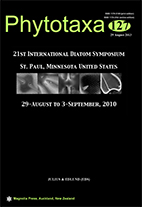Abstract
Changes in diatom abundance and cell size in Great Lakes phytoplankton collections were examined from two periods, 1996–1999 and 2007–2008. Trends indicate marked shifts in pelagic diatoms, including diatom total biovolume and cell density declines. Concurrent with these changes have been establishments of invasive species, water quality changes and longer stratification periods resulting from climate warming. No consistent change in cell sizes was observed in diatoms between the two periods in the Great Lakes basin as a whole, but lake- and taxon-specific changes were apparent. Cell size declines include centric and pennate diatoms in the spring in Lake Huron and pennate diatoms in the spring in Lake Superior. Increases in cell size occurred for centric diatoms in Lake Erie and pennate diatoms in the summer in lakes Michigan and Ontario. Some of the more dominant taxa exhibited lake-specific shifts. For instance, lightly-silicified diatoms such as Nitzschia increased in length in Lake Huron, possibly as an adaptation to climate warming and/or declining nutrient supplies. Difficulty in explaining the observed changes in cell sizes is acknowledged, but continued study of these trends is critical to understanding impacts on Great Lakes food webs.

